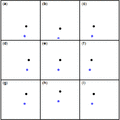Gravity assist facts for kids
A gravitational slingshot (also called a gravity assist or swing-by) is a clever trick using a planet's gravity to change a spacecraft's speed and direction. It helps spacecraft travel faster, slower, or change their path without using a lot of fuel. This saves money and time on long space journeys.
The "assist" happens because the planet is also moving. As the spacecraft flies close to the planet, the planet's gravity pulls on it. This pull can add energy to the spacecraft, making it go faster, or take energy away, making it slow down. It's like a cosmic push or pull!
The Soviet Union first used this trick in 1959 for their Luna 3 probe. This probe took the first pictures of the far side of the Moon. Later, the Pioneer program and many other space missions also used gravity assists.
Contents
How a Gravity Slingshot Works
A gravitational slingshot uses the movement and gravity of a large object, like a planet. When a spacecraft flies close to a planet, the planet's gravity pulls on it. This pull changes the spacecraft's speed and direction.
Gaining Speed from a Planet
Think of a skateboarder getting a push from a moving car. The car gives the skateboarder extra speed. In space, a planet acts like that moving car. As a spacecraft approaches a planet, the planet's gravity pulls it in. The spacecraft then swings around the planet. Because the planet is also moving, it can give the spacecraft a boost. The spacecraft leaves the planet with more speed than it had when it arrived. This extra speed comes from the planet's own movement around the Sun.
Slowing Down with Gravity Assist
A gravity assist can also be used to slow a spacecraft down. Instead of swinging behind the planet, the spacecraft can fly in front of it. This allows the planet's gravity to pull the spacecraft backward, reducing its speed. This is useful when a spacecraft needs to slow down to enter orbit around a planet.
Changing Direction in Space
Besides changing speed, a gravity assist can also change a spacecraft's direction. By carefully aiming the spacecraft's path around a planet, engineers can steer it towards its next destination. This is very important for missions that visit multiple planets.
Why We Use Gravity Assists
Space travel needs a lot of energy to move spacecraft. Fuel is heavy and expensive to carry into space. Gravity assists help save fuel, which makes missions cheaper and easier.
Saving Fuel and Money
Without gravity assists, spacecraft would need to carry much more fuel. This extra fuel would make the spacecraft heavier. A heavier spacecraft needs more powerful rockets to launch it, which costs more money. By using a planet's gravity, missions can reach distant places like Jupiter or Saturn with less fuel.
Reaching Distant Planets Faster
Gravity assists also help spacecraft travel faster. This means missions can reach far-off planets in less time. For example, the Voyager probes used gravity assists from Jupiter and Saturn to speed up their journey to the outer solar system. This allowed them to explore more planets in a shorter period.
Exploring Multiple Worlds
Some missions are designed to visit several planets. A gravity assist can help a spacecraft move from one planet to the next. It acts like a stepping stone, using each planet's gravity to slingshot to the next target. This allows scientists to study many different worlds with just one spacecraft.
Famous Missions Using Gravity Assists
Many important space missions have used gravity assists to reach their goals.
Luna 3 (1959)
The Soviet Union's Luna 3 probe was the first to use a gravity assist. It flew around the Moon and used its gravity to change its path. This allowed Luna 3 to photograph the far side of the Moon, which had never been seen before.
Pioneer and Voyager Probes
The Pioneer program and Voyager missions used gravity assists to explore the outer solar system. The Voyager 1 and 2 probes used a "grand tour" strategy. They flew by Jupiter, Saturn, Uranus, and Neptune, using each planet's gravity to speed up and reach the next one. This allowed them to visit all four giant planets.
Galileo Mission to Jupiter
The Galileo spacecraft, which studied Jupiter, used gravity assists from Venus and Earth. It made two flybys of Earth and one of Venus to gain enough speed to reach Jupiter. This saved a lot of fuel and allowed the mission to carry more scientific instruments.
Cassini Mission to Saturn
The Cassini spacecraft, which explored Saturn, also used several gravity assists. It flew by Venus twice and Earth once to build up enough speed for its long journey to Saturn.
Images for kids
See also
 In Spanish: Asistencia gravitatoria para niños
In Spanish: Asistencia gravitatoria para niños



